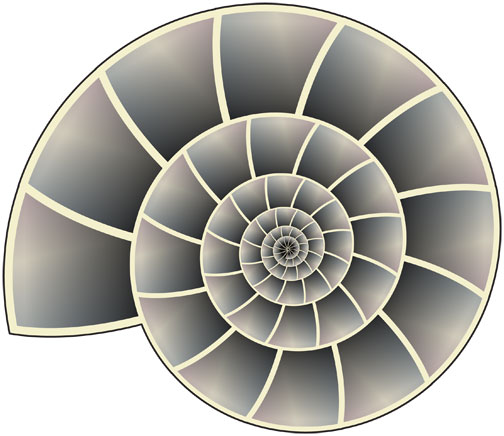"Graphical interpretations"

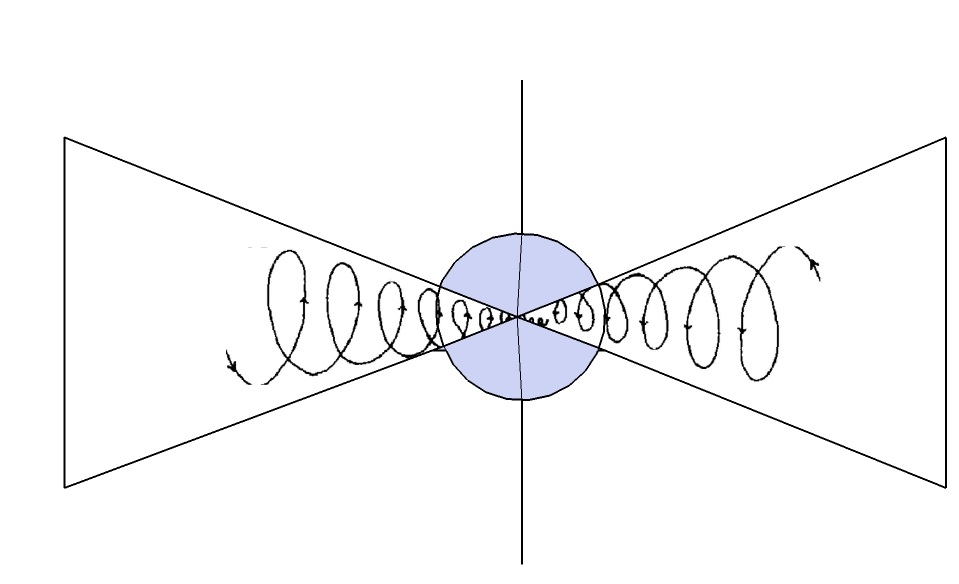
My original ideas which were built around Cones and spheres, were based on the idea of Concentric Spirals within the cones, where at the beginning and end of
the spiral, you could move from one cone (on an Outward Spiral) to another (on an Inward Spiral), or at a Singularity could move from one cone to another by
rotating the intersecting plane. (something like the above)
I was trying to develop a graphical/scientific logic that would use Zeno’s concept “The primary substance in the Universe comes from fire, passes through the stage
of air, and then becomes water: the thicker portion becoming earth, and the thinner portion becoming air again, and then rarefying back into fire. Individual souls
are part of the same fire as the world-soul of the Universe. Following Heraclitus, Zeno adopted the view that the Universe underwent regular cycles of formation and
destruction.”
To me this implied a spiral going out from a single point/place/time and then returning to the same point/place/time (which I hope the second sketch shows?) This also
fell into line (to some extent) with the Light-cone concept on Space-time.
It was then that I came across the Hypercones, which seemed to me to be a much better way of relating cones to spheres. The following pictures and info come from the
BRIMS and Simon Thomas Webpages that I visited during my research. Also included is an explanation of how a Hypercone is constructed.
Hypercones http://plus.maths.org/content/art-numbers (also see Links Page)
A mathematical and artistic form that has lately been of great interest to Simon is something that he calls the hypercone. A hypercone is the spiral-shaped envelope
formed when a circle of exponentially decreasing radius is rotated through space, as shown in the sculptures.
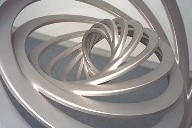
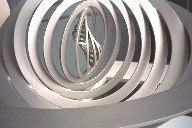
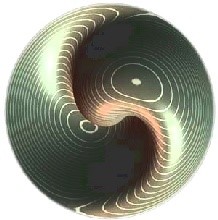
In these sculptures, the "idea" or "Platonic form", as Simon puts it, of a hypercone is represented by a series of concentric rings that have undergone certain rotations. The radii of the rings decrease exponentially and the width of each ring is a fixed proportion of its radius. The abstract idea underpinning these hypercones might be said to be that of a two-dimensional structure (a series of flat concentric rings) being manipulated in such a way that they occupy a volume in three-dimensional space. To the right is a Computer model which shows a computer simulation of a three-dimensional hypercone, where a surface has been interpolated around the edges of the rings that form the "skeleton" of the form.
HYPERCONE http://www.simonthomas-sculpture.com/research_hypercone.php (also see Links Page)
Simon Thomas arrived at what he later named as the "Hyperconic" progression as the result of working towards an idea concerning an endless structure able to traverse
the whole of space; from "Planks length" (the smallest division of space) and outwardly to wherever space ceases to exist. Many more complicated structures preceded it,
but ultimately these were whittled away to reveal the simple "Hypercone".
Hypercone is purely an equation of three elements, which can be seen on the accompanying Data sheet. By changing the values of those elements, the structure can be
adjusted. If the gaps between the rings are filled then a full surface can be produced (see- "Every Thing Can Only Spin"), and also by altering the profile of the
rings other possibilities become available; this is evident in a "Striated Hypercone".
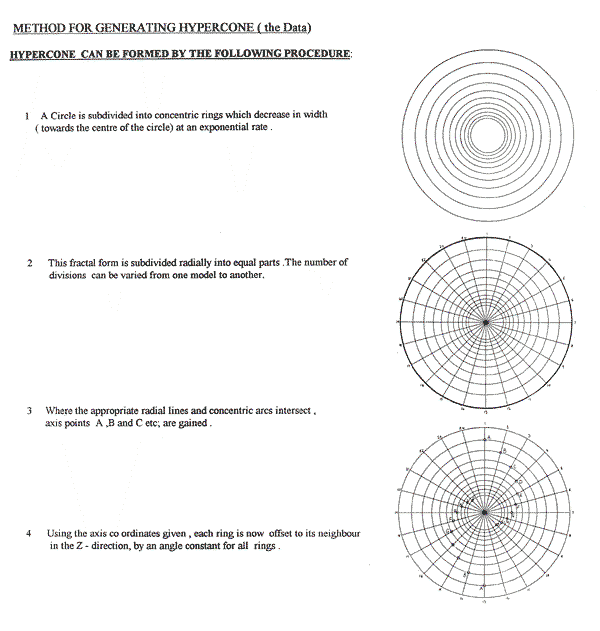
During his fellowship period at Bristol University Physics Department Simon Thomas discussed the qualities of Hypercone with Astronomer Prof. Mark Birkenshaw. Mark thought of it as "reminiscent" of the event horizon surrounding a rotating Black Hole.
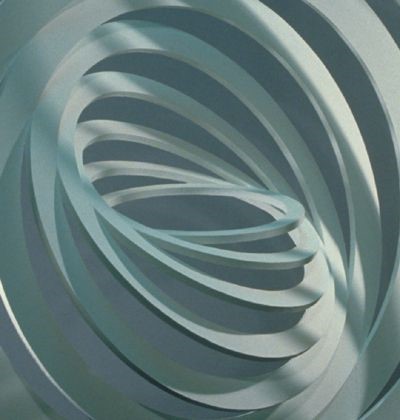
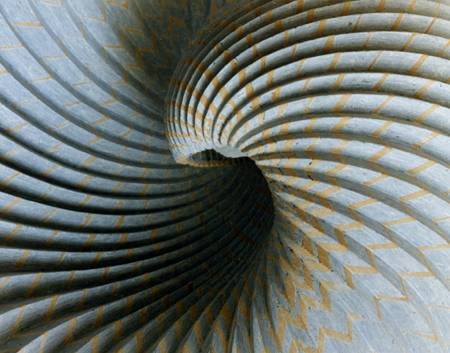
There are also some interesting details included in a Report titled the "Dynamics of Astrophysical Discs" (January to June 1997) by J Goodman(Princeton), JCB Papaloizou (QMW), JE Pringle(Cambridge), and JA Sellwood(Rutgers), for the EC Summer School (full details are to be found in Pringle(1997) MNRAS 292,136. The report covers research into the influence of gravity in a variety of astral configurations, including galaxies. Also mentioned are Black Holes, and the computer-generated images, can be taken to assist in the concept that the "Hypercone" really does have a place in the sky. The images also bring to mind the cross-section of a Nautilus shell (Nature reflecting Mathematics again!)
